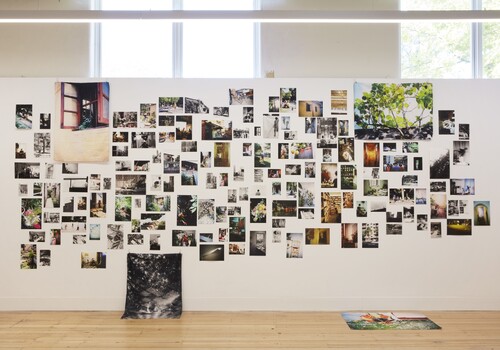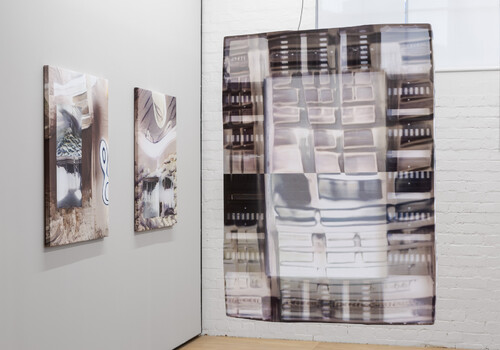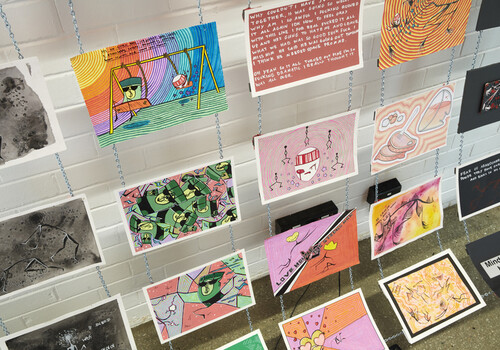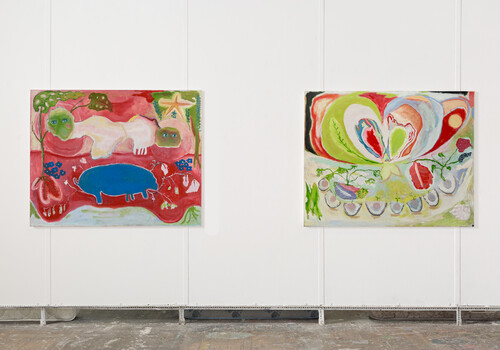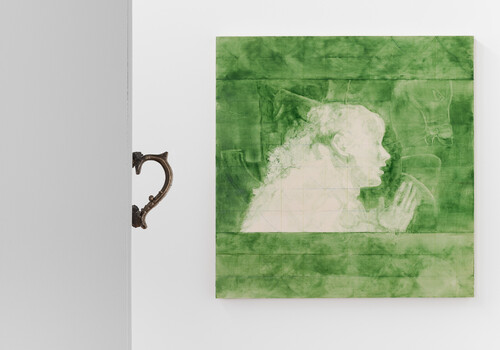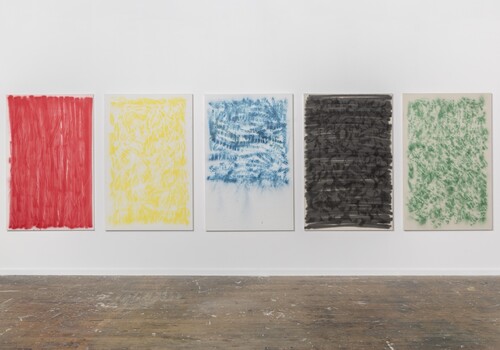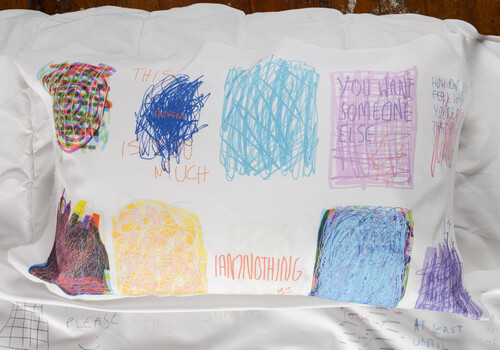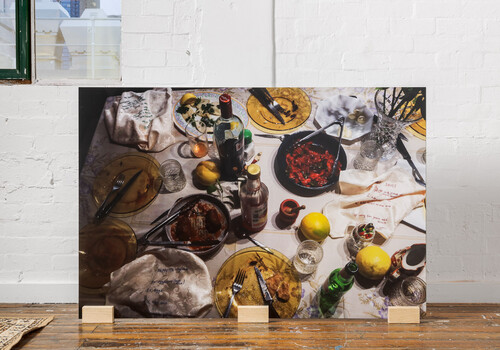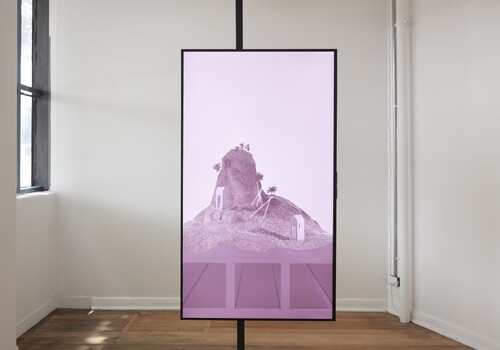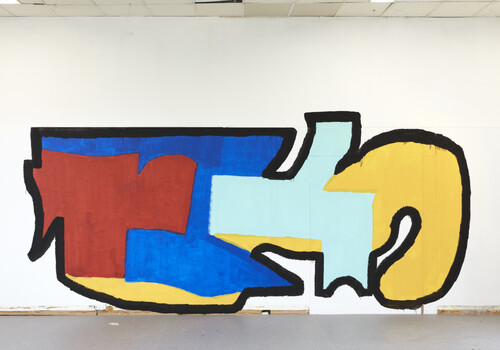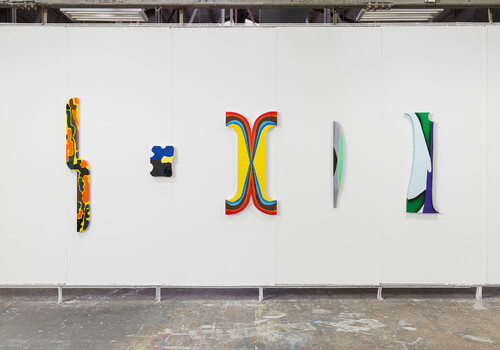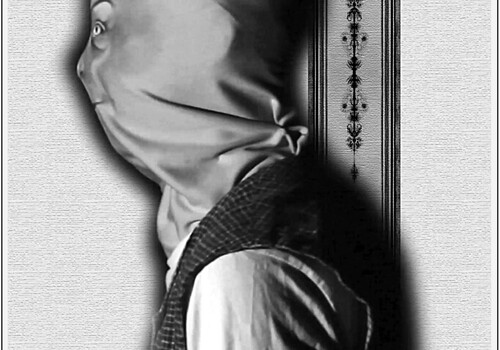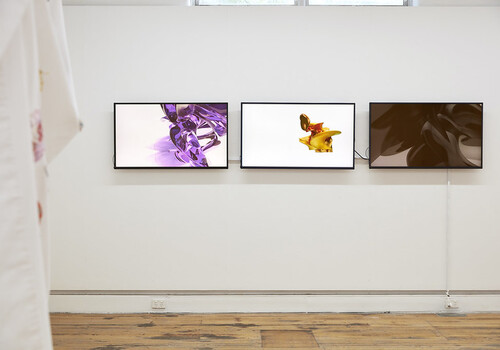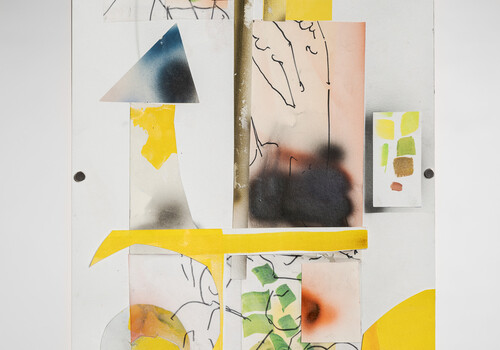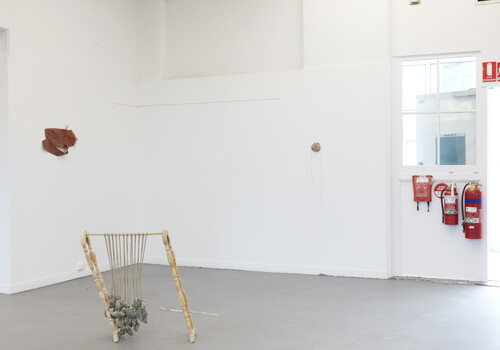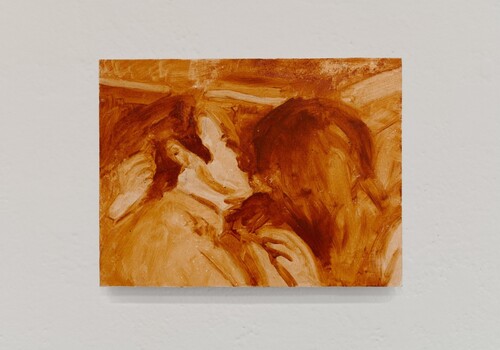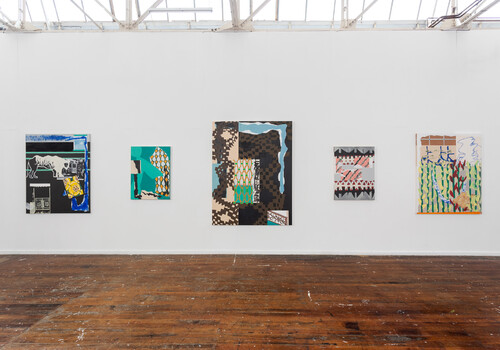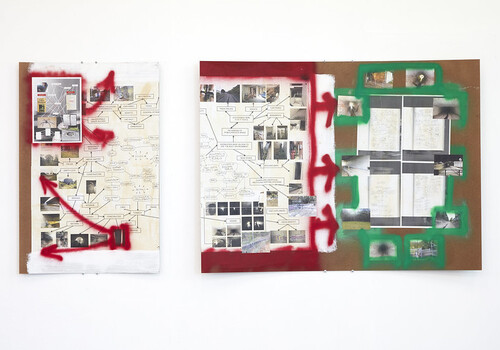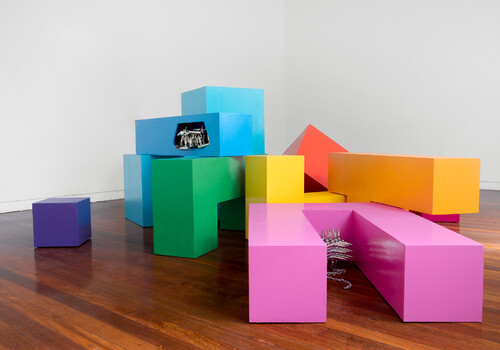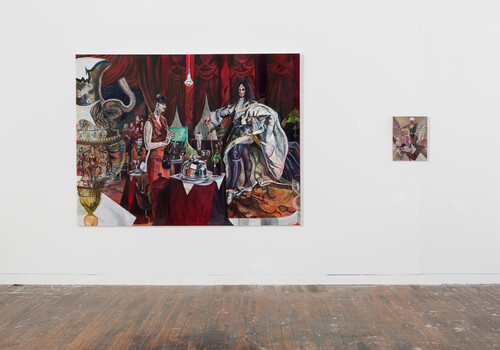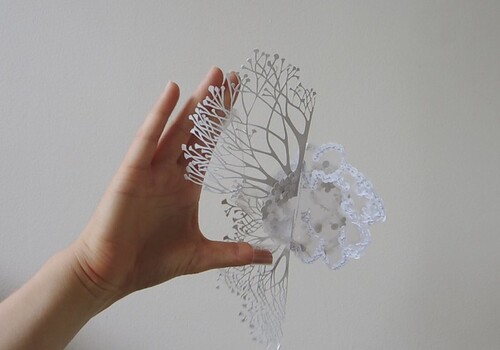Drawing and Printmaking, Victorian College of the Arts
By Emma Walsh
Throughout this incubated period of Melbourne life, many local emerging artists turned their creative focus to the mundane details of the world around them, celebrating the ordinary and the everyday. It is a timely focus that resonates with many of us who spent the year in previously unimaginable confinement, unable to explore and engage with the world outside our own walls. During the “unprecedented year” of 2020, we could no longer distract ourselves with the glitter of the modern hustle. As a locked-down community, we were forced to sit and be with what is, regardless of the social media persona we’ve created for ourselves or the narrative we perpetuate to others. It is through art that we can begin to explore the reality of our shared experience. Embracing the normality of day-to-day life was the preoccupation of this year’s VCA graduating students, whether by design or happenstance.
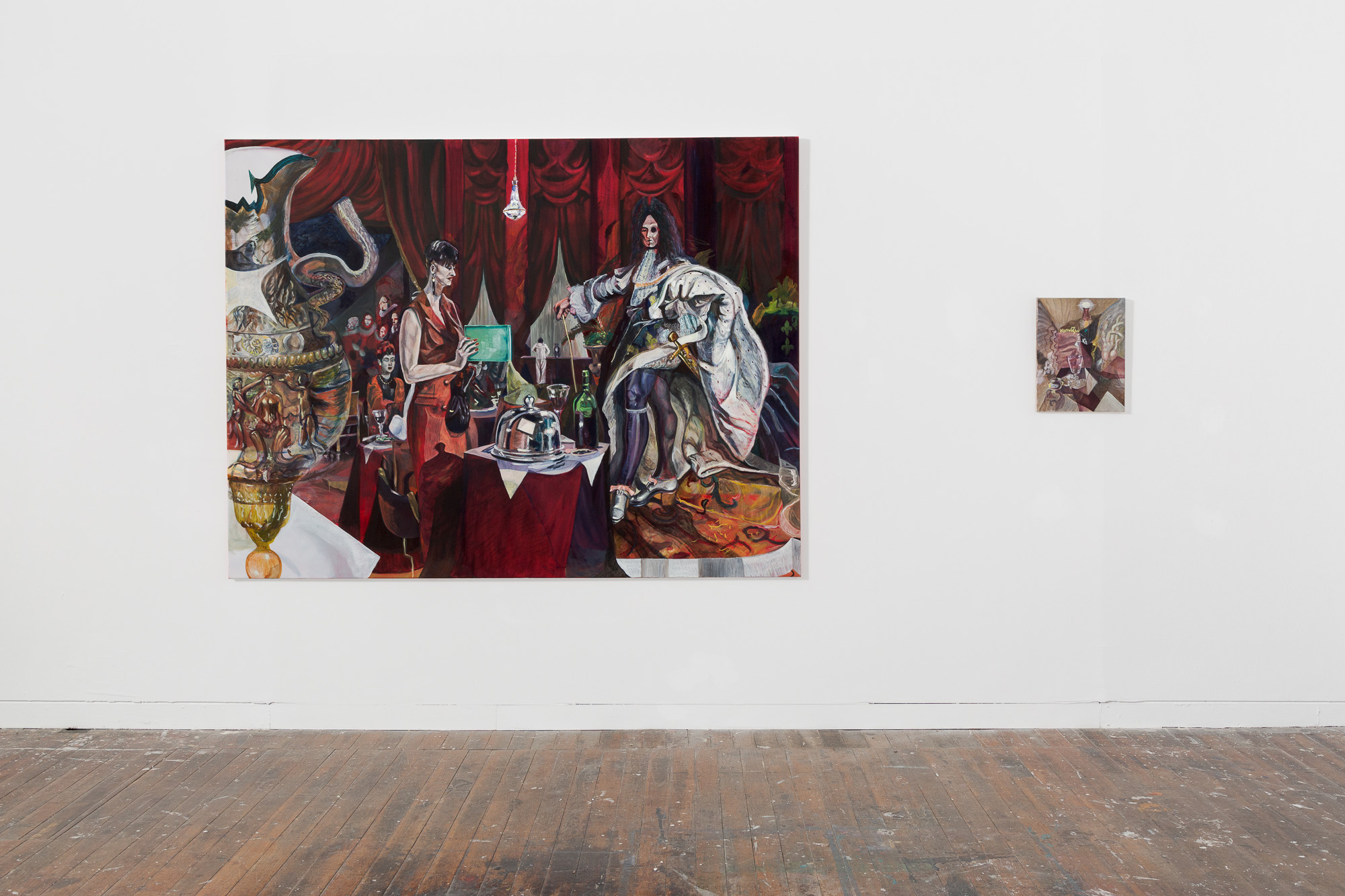
This exploration of the ordinary (and its political dimensions) manifested in Christopher Theofanous’ paintings. In A Bitter Decadent Morsel (2020), the central figure, perhaps an homage to King Louis XIV, is a mere prop in a far more dynamic scene. His historic status as a revered figure, above the everyman, is quashed. There seems to be a definitive stab at the upper class mirrored within his work Mock Life (2020). The pieces force us to consider the ways in which our own artistic privilege meets with the flow of society. In this post-Trump age of lucrative faux class, we see that once reflected the upper echelon of the world lose their intrigue. The works delve into a deeper critique of society through an evocative nod to Juan Davila and his commentary on the politicisation of class, sexuality and the individual. There is a strong feeling of cutting back the facades we present, to highlight the deeper notions of what it is to be part of a society that amplifies the falsehoods of class and refined taste. This is done through hidden figures and fragmented masks that enable the viewer to see past the presentation and into the reality of the person underneath.

This kaleidoscopic shift is further exemplified within the work of Pang Jie Siah, located in the adjoining room. The shifting light and cubic spaces created brings the mundane into a realm of interest. In Public Bathroom Mirrors (2020), a shock of grids and reflections weaves a world of intrigue into an area of obscurity. A subtle moment in time is created when one is lost in the convergence of mirrors. Dim lights cast a muddy hue across the mustard tiles, and the sink juts out bringing the viewer into the scene—meeting the faceless stranger in a world so foreign to the isolation of our homes, presenting to us the anonymity of public spaces.

Emerging from the Other Lights and Sounds (2020) ousts the voyeur in us all, making us unequivocally aware of our own nosy tendencies. We join the central figures as they peer into the window of their neighbours, finding entertainment and intrigue through their nosiness. As with Theofanous’ paintings, a warm and muddy colour palate is utilised, creating that feeling of well-worn experiences, and the comfort that brings. Again, we are reminded of the subtle excitement in the ordinary moment. Warm tones and a softness of treatment create a comfortable space upon which to reflect on the intrusion of our own eyes.
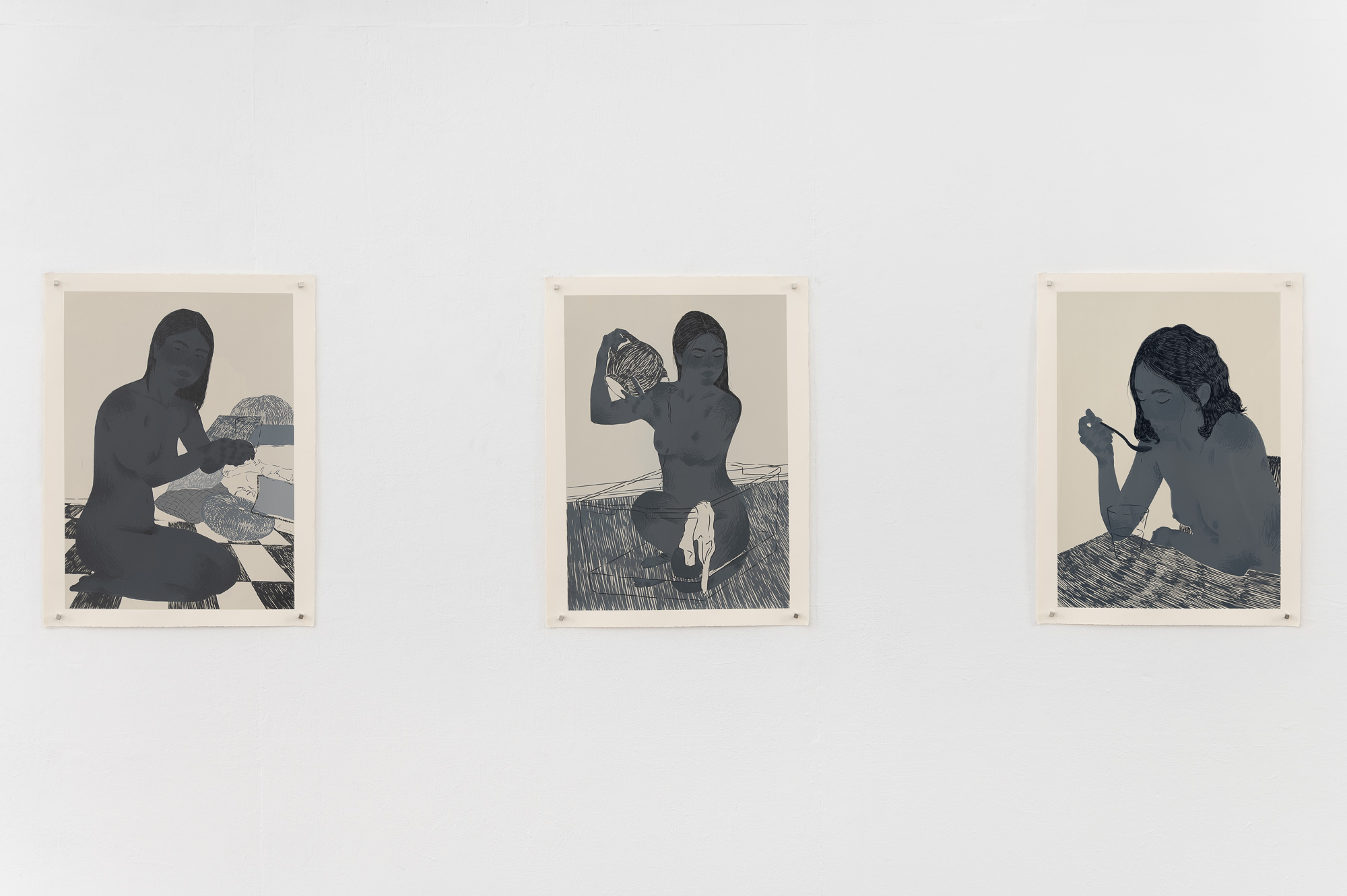
This voyeuristic impulse is further reiterated within Alex Smith’s Clean (2020) and Soup (2020). We are invited to witness two mundane activities: bathing and eating. Cool monochromatic tones remove the immediacy of nakedness but also highlight the shadow quality of watching without being seen.
This is mirrored in Lily Beamish’s series, where we become one of a crowd, quietly taking in the surrounding lives and losing ourselves in anonymity. Both Paclo (2020) and The Meeting of the Bicycles (2020) create a simultaneous distance and closeness that relates to this feeling of observing everyday experiences. We can see ourselves in the crowded streets and the quiet daily interactions outside a local shop. We are granted a safe distance in Beamish’s anonymised street scenes.
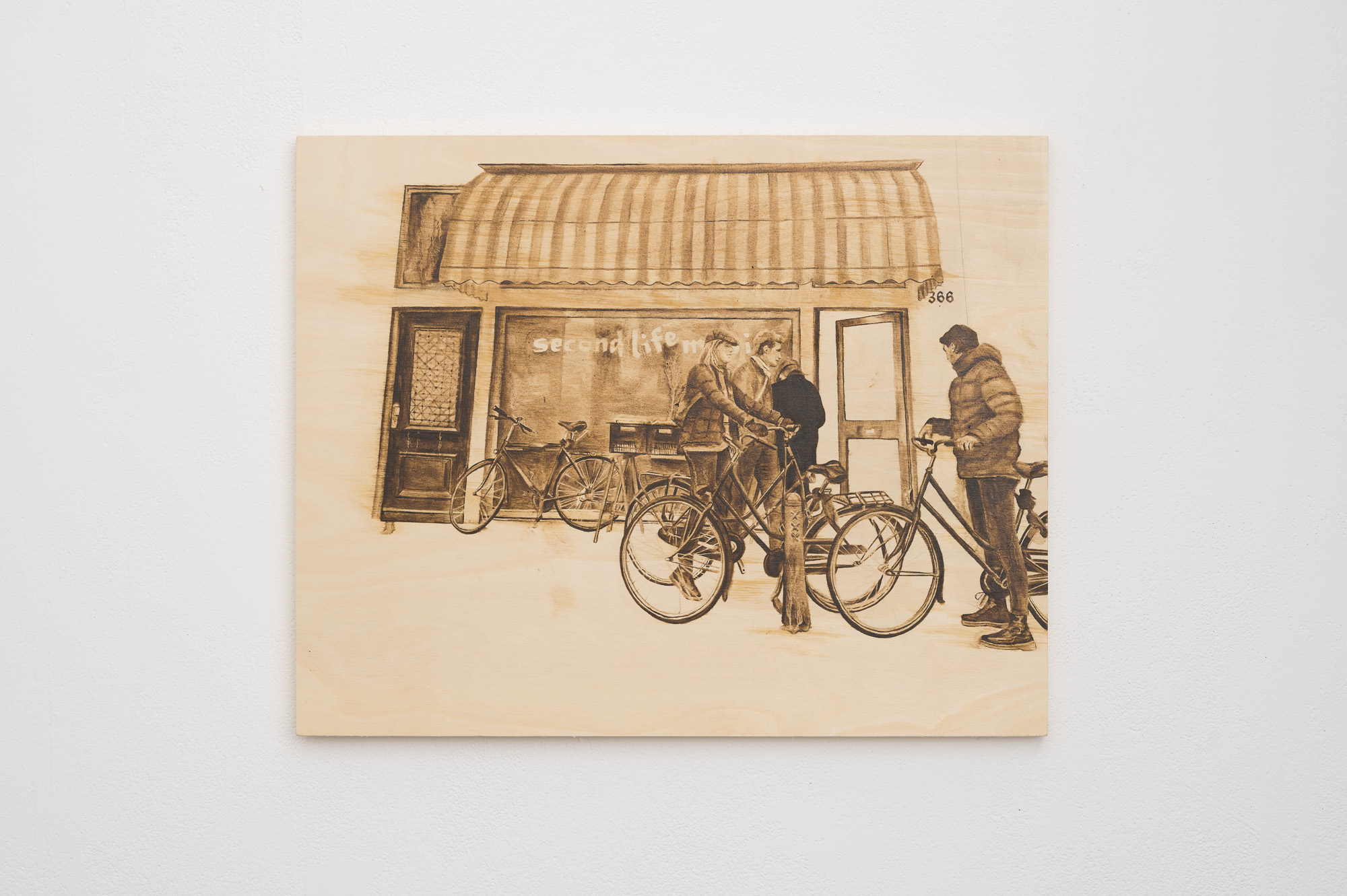
Although not part of the Drawing and Printmaking cohort, I would be remiss not to mention Seth Searle’s Tiles and Trifle Bowl (2020) and Grace watching while I pour her water (2020). Both are extraordinary in their ability to discern the ordinary as exciting and dramatic opportunities for art. This rumination on the mundane or ordinary is something fitting of the year that was. As viewer, we become aware of the mild beauty of each situation we find ourselves in, and how, in fact, each moment has a ritualistic and emotive aspect to it.
Emma Walsh is a writer and art lover currently located in Melbourne. She is currently enrolled in a Master of Art Curatorship at the University of Melbourne after a break following her undergraduate in Art History at the University of Auckland. She has a dual love for Italian Baroque and contemporary art theory.
